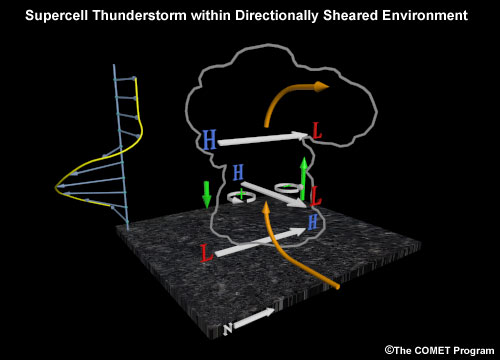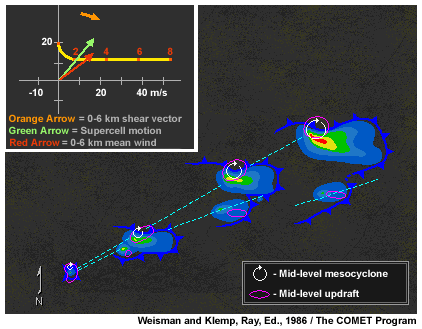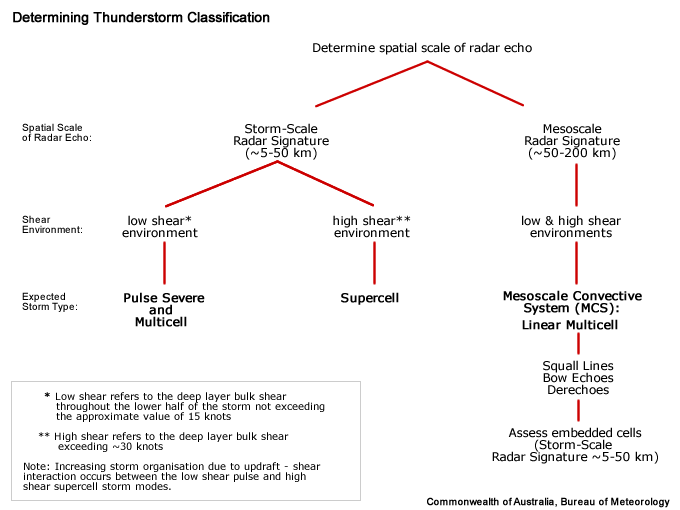Conceptual Model
Anomalous storm propagation can be used as one of many signatures increasing the likelihood of a storm being severe. Of most interest here, the presence of anomalous storm motion may indicate that the thunderstorm is supercellular.
Supercells move anomalously to the steering flow due to dynamic pressure perturbations set up by a sheared environment interacting with a strong and persistent updraft. Nonhydrostatic pressure gradient forces promote new updraft growth on preferred flanks of the existing storm. On the upshear side high dynamic pressure forms, and on the downshear side low dynamic pressure forms. This rule of thumb also applies in a directionally varying shear environment. In an anticlockwise hodograph (most common in Southern Hemisphere), a storm–scale perturbation high forms on the left flank of the deep layer shearvector at low levels. At higher levels, a storm–scale perturbation low forms on the left hand side of the deep layer shear vector. The result is an upward directed perturbation pressure gradient force that promotes new development on the left flank of the storm. Meanwhile, the right flank of the storm would experience a downward directed dynamic pressure gradient force weakening or even suppressing the growth or maintenance of updrafts.

Updraft shear interactions and the resulting perturbation pressures in a shear environment marked by a counter-clockwise hodograph.
Splitting cells may be an early indicator to anomalous propagation. Uniformly splitting cells occur preferentially in unidirectional shear environments (straight hodographs).
Splitting supercells produced in an environment characterised by a mainly straight hodograph with some anticlockwise curvature in the low levels.
Splitting can still occur in curved hodographs. In an anticlockwise hodograph (typically found in the Southern Hemisphere), a left mover would be dominant and the right mover would likely decay, as explained above.

Splitting supercells produced the shear depicted on the anticlockwise hodograph. The left–mover is dominant while the right-mover usually decays in this situation.
The presence of propagation due to updraft and strong deep layer shear interaction suggests that the thunderstorm is possibly a supercell. Supercell thunderstorms increase the chance of producing any of the four severe weather criteria used to define a severe thunderstorm: damaging or destructive winds, large hail, tornadoes and heavy rainfall resulting in flash flooding.
Determining Thunderstorm Classification
Anomalous storm propagation due to updraft interaction with strong deep layer shear usually is associated with supercells.
To help determine the classification of the thunderstorm you are observing, use the following flow chart to help diagnose which thunderstorm conceptual model you should consider more closely. If you already know the conceptual model to apply, click on the appropriate model at the end of the flow chart.

See Supercell for more information.
